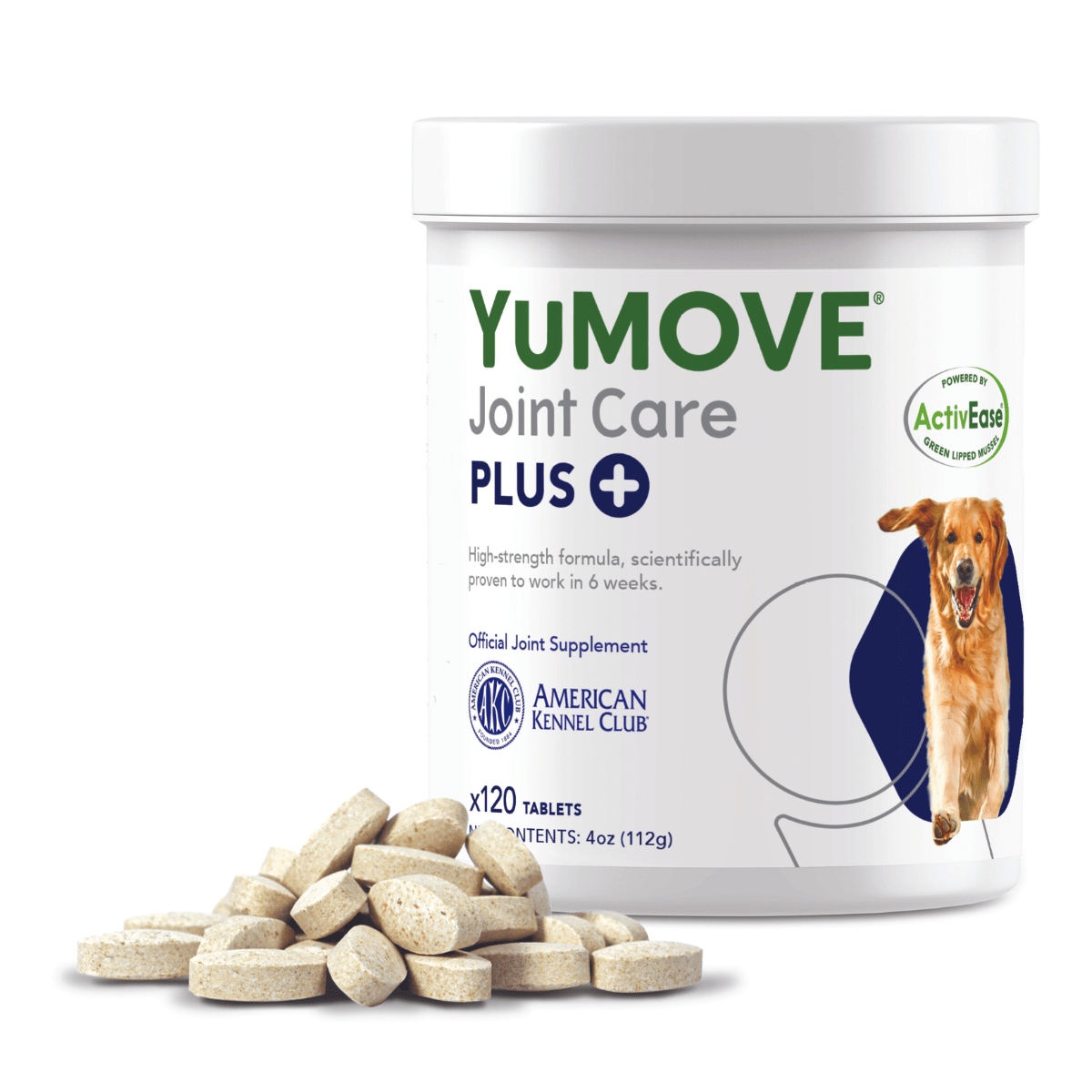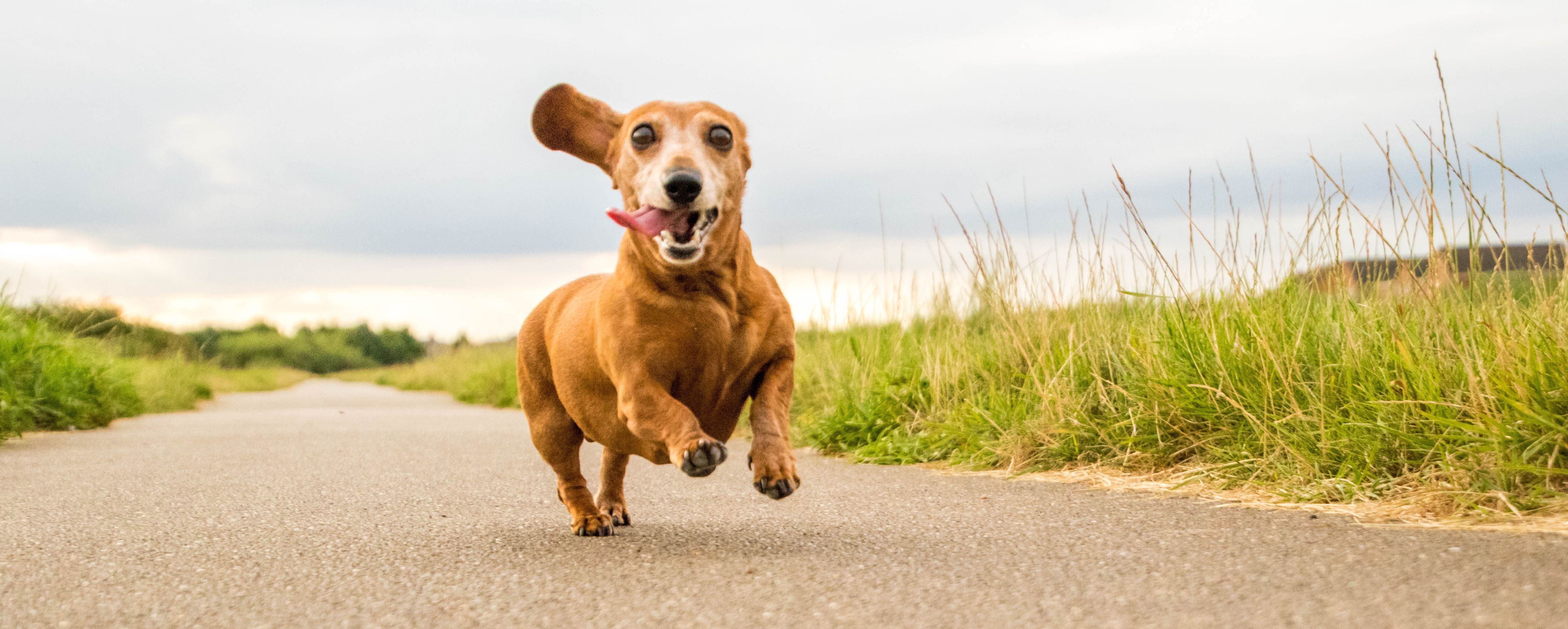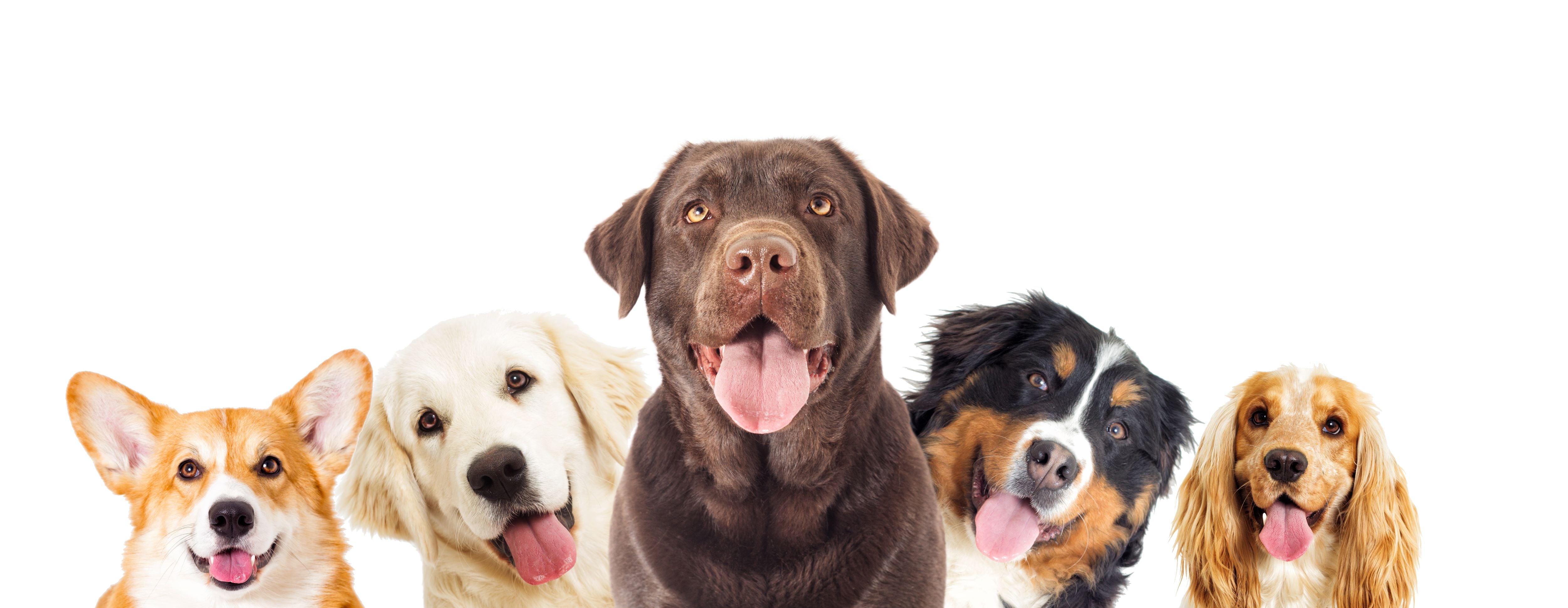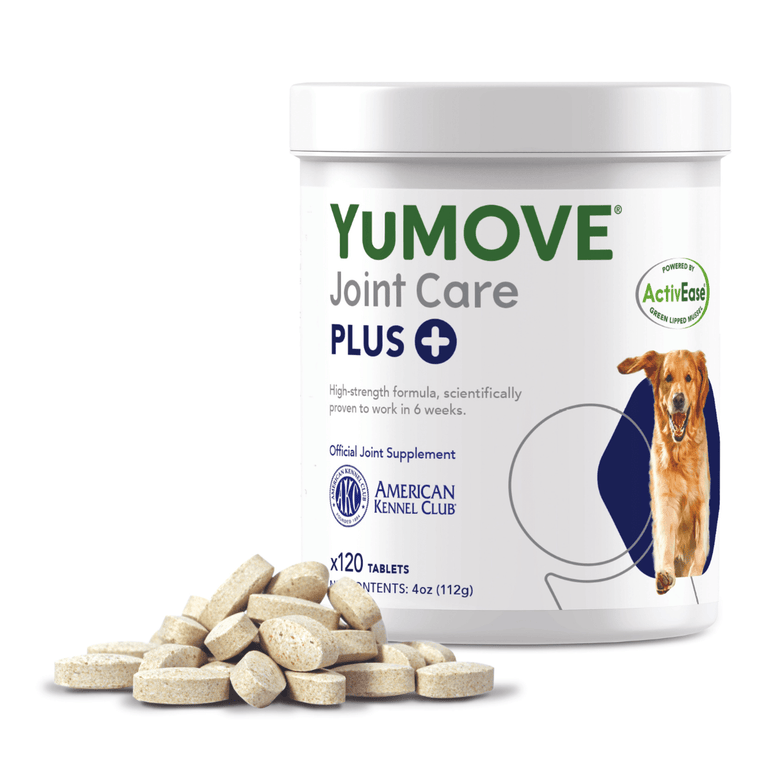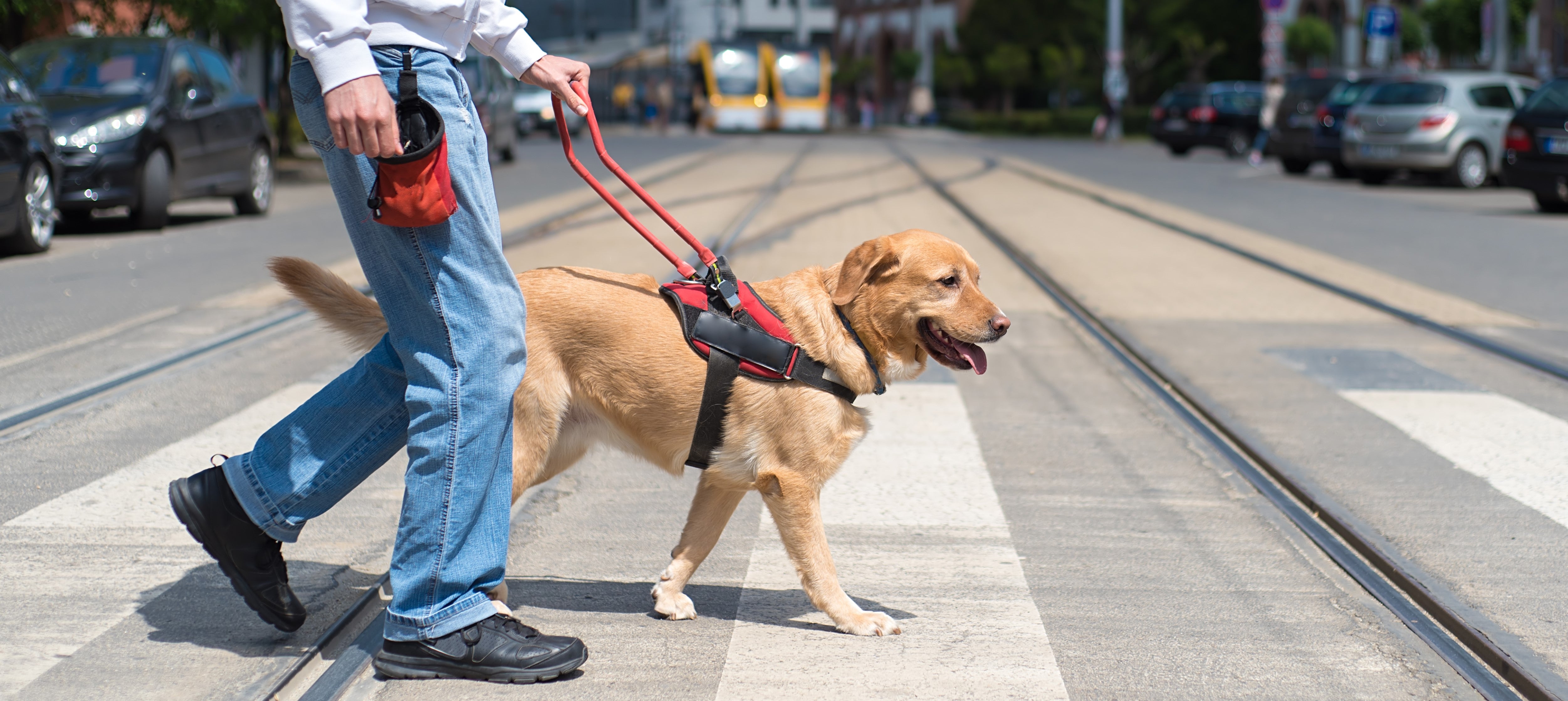Have you ever wondered what goes on in and around your dog’s joints? What is it that helps your favorite furry friend to tear around the yard, jump up to play catch or leap on and off your couch? We’re taking an in-depth look at how your dog’s joints work – from the top of their head to the tip of their waggy tail.
Want to support your dog’s joint health? Take a look here at the YuMOVE dog joint supplements which have been designed for dogs of all ages.

Why are dog’s joints important?
Your dog’s joints are just brilliant. They’re the connector - joining inflexible bones together. They help the bones move in a flexible way, allowing your dog to move around freely, investigating and enjoying their world.
Joints give your dog their wide range of motion. Think of them acting as shock absorbers in the body when they’re busy running and jumping around.
But did you know that your dog has different types of joints that all move in different ways?
Your dog has three types of joints

Synovial or ‘free-moving’ joints are the most common type of dog’s joints. They let your pooch move and transfer weight from one part of their body to another. They help with all that busy activity we see our dogs doing – running, changing direction and moving back and forth.`
Fibrous or fixed joints are found in places where you don’t want much movement, such as the skull. They’re connected by tough, fibrous tissues. Did you know that your dog's skull is made up of multiple bones? They’re all supported by fibrous tissue.
Cartilaginous joints allow some movement, and can be found in areas such as the spine, where bones are joined by cartilage. The movement of these joints is less than the Synovial joints – so think of the joints between the vertebra in the spine and the joints where the ribs meet the sternum.
Dog's synovial joints
Let’s look at synovial joints in a bit more detail, as they’re the key areas that help your dog to enjoy a full range of movement. Remember these are your dog's free-moving joints. Dogs have synovial joints in their shoulders, hips, elbows, wrists, knees and ankles.
They are pretty complex structures. The part where the two bones meet is protected by a tough joint capsule. And outside of the joint capsule, different soft tissues, tendons, ligaments and muscles surround the joint. They all work together to protect the joint and allow it to move.
Inside the joint capsule, the ends of your dog’s bones are cushioned and protected by a thin layer of cartilage. This provides a smooth, friction-free surface that allows the joint to move smoothly. Cartilage provides flexibility, lubrication and cushioning that help your canine companion manage all those doggy leaps and jumps.
Synovial fluid inside the joint capsule provides some additional protection. This slippery, viscous fluid contains Hyaluronic Acid, a gel-like molecule that works as a lubricant and helps to absorb shocks and cushion your dog’s joints even more.
Your dog’s shoulders: no collarbone
Unlike humans, dogs don’t have a collarbone. Who knew?!
Their shoulder blades aren’t connected to their skeleton by other bones, but by a series of muscles instead. Back in the days when your dog was hunting for food, this muscle connection would allow it greater speed and agility to catch its prey. Today, it means your dog can use their powerful back legs to propel themselves forwards while using their shoulders to increase the length of their stride. If you’ve ever wondered how your pooch can run so fast, this is why!
Your dog’s shoulders have ball and socket joints, where the ball at the top of the humerus – the bone at the top of the front leg - meets the scapula, or shoulder blade. This type of ball and socket joint allows for a great range of movement, and comes into play every time your dog jumps up to catch a ball and when they land back down on the ground. The more they jump and zoom, the more the joint is used.
A dog’s anatomy in human terms
So, how do you work out where a dog’s wrists or ankles are? If you imagine a human being on all fours, their elbows and wrists would be at the front and their knees and ankles would be at the back. The same is true for dogs.
The elbow: the hinge on your dog’s forelegs
You’ll find your dog’s elbow joint just below their chest. The joint lower down the leg, which you might assume is the elbow is, in fact, the wrist joint.
The elbow joint is where the three bones meet on your dog’s foreleg: the humerus – the long bone of the upper foreleg – and the radius and ulna of the lower leg.
The elbow joint in your dog is a ‘hinge joint’. A bit like a door hinge, it moves in one direction, unlike a ball and socket joint that has a wider range of movement. The elbow joints in your dog’s front legs tend to take a fair bit of force, especially when your dog brakes or comes to a sudden stop.
Your dogs wrist joint: an intricate system
Your dog’s wrist joint, also called the ‘carpus’, is located between the elbow joint and the paw on their front legs. Here, the bones of the upper leg meet with seven small carpal bones. This is an intricate system that helps your dog to stop, stand and move freely.
Your dog's hip joint: active every day
Your dog’s hip joints work hard every day to keep your dog on the move. These are ball and socket joints that allow a wide range of movement.
Each time your dog jumps up, plays, zooms after a ball or races up and down stairs, their hip joints will be activated. Inside the joint, synovial fluid helps to cushion the movement, while the layer of cartilage over the bones adds extra protection.
This hard work is one of the reasons we made YuMOVE.
Your dog's knee joint: aka the ‘stifle’
Moving on to your dog’s hind legs – you’ll find the knee joint, which is also known as the stifle. This is one of the largest synovial joints in your dog’s body and it has an important role to play. It’s crucial in enabling your dog to stand up, jump into the car or onto furniture, walk, run and play.
Your dog's ankle joint: aka the ‘hock’ joint
Finally, we come to the ankle joint, which connects your dog’s shin bones to their paws. If your dog loves to run or jump, this is a joint which can come under extra pressure, as it flexes and adapts to the intense movement.
How time affects your dog’s joints

However, as your dog gets older, their body produces less synovial fluid and the cartilage in their joints can reduce due to natural wear and tear. The result can be stiff joints and less mobility.
If you’ve noticed any signs of stiffness in your dog, try our YuMOVE range – PLUS Extra-Strength Tablets, Daily Soft Chews, Chewable Tablets and Tasty Bite Treats. They are scientifically proven to make a difference in 6 weeks* and are packed with high-quality ingredients including:
- ActivEase ® Green Lipped Mussels that contains Omega-3 fatty acids, which soothes their stiff joints.
- Glucosamine that provides the major building blocks of cartilage to help protect their joints.
- Hyaluronic Acid that supports the synovial fluid that helps lubricate and cushion your dog’s joints.
* In vivo, double-blind, placebo-controlled, objectively measured canine clinical study by the Royal Veterinary College, UK (Excluding YuMOVE Joint Care For Young Dogs.)

